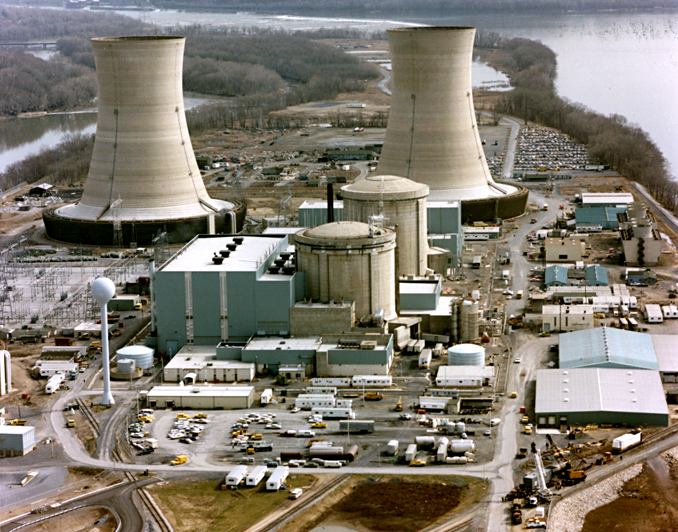Three_Mile_Island_(color)-2.jpg

Part 1 of 2 Parts
One major concern with respect to U.S. commercial nuclear power reactors is just how long these aging fission reactors can continue to operate safely. As they age, the dangers of a major accident increase. The Biden administration must address the problem of embrittlement of metal and concrete in old nuclear power reactors.
If any nuclear power plant in the U.S. melts down, millions of people would be in danger. The economic impact of such an event would hammer an already weak economy. The COVID-19 pandemic would complicate any such accident and slow recovery.
Embrittlement is one of the most pressing problems in the U.S. nuclear reactor fleet. Nuclear power reactors are generally licensed for forty years. One reason this life span was selected was because it was feared that embrittlement would become serious after forty years. The average age of nuclear power plants in the U.S. is now forty years.
Arnold Gundersen is a nuclear engineer with more than 44 years of experience in the nuclear industry and is currently the chief engineer at Fairewinds Associates. This is how he explains embrittlement: “When exposed to radiation, metal becomes embrittled and eventually can crack like glass. The longer the radiation exposure, the worse the embrittlement becomes. A nuclear reactor is just like a pressure cooker and is a pot designed to hold the radioactive contents of the atomic chain reaction in the nuclear core. And metals in reactors are exposed to radiation every day a plant operates.”
“If the reactor is embrittled and cracks, it’s ‘game over’ as all the radiation can spew out into the atmosphere. Diablo Canyon [a twin-reactor facility in California] is the worst, the most embrittled nuclear power facility in the U.S., but there are plenty of others that also could crack. Starting with Diablo, every reactor in the U.S. should be checked to determine they are too embrittled to continue to safely operate.”
Any metal inside a nuclear power reactor is bombarded with radiation. This includes the steel used in the reactor pressure vessel which contains the super-hot nuclear core. Every U.S. reactor is required to have an Emergency Core Cooling System and a Core Spray System. These systems are intended to flood the core if there is a loss-of-coolant accident. Seriously embrittled metal in the core of an old reactor would shatter when immersed in the cold water from the emergency system. The resulting explosion would probably blow the containment structure apart. This happened at the Chernobyl and Fukushima nuclear power plants. A plume of radioactive materials would be ejected into the atmosphere and carried by the wind, dropping radioactive fallout across the landscape.
At 4 a.m. on March 28, 1979, nuclear fuel inside the core of the Three Mile Island Unit Two nuclear power plant began to melt. The Emergency Core Cooling System was triggered. The reactor had only been licensed and begun operating the year before. If it was decades old and its steel pressure vessel was seriously embrittled, the reactor would have shattered and there would have been a very serious nuclear disaster. The entire northeastern U.S. might have been covered with deadly radioactive fallout.
Please read Part 2 next